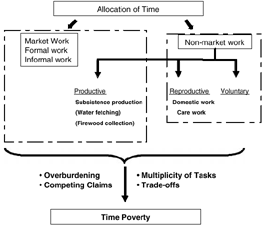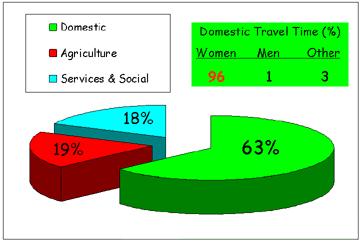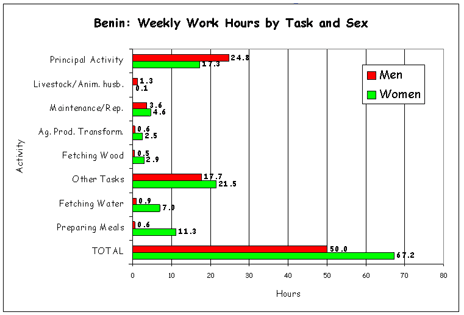|
GENDER AND TRANSPORT RESOURCE GUIDE
|
|
|
Module 2: Challenges for Mainstreaming Gender in Transport
2.1. Time Poverty

Source: Gender, Time Use and Poverty
in Sub-Saharan Africa. World Bank 2005:15
Determinants of Time Allocation
Time Burden Examples from AfricaA 1994 study in Zambia showed that women bear the greatest burden of transport tasks. 
Source: M. Blackden based on Women
in Rural Transport. Christina Malmberg Calvo. SSATP Working Paper 11.
1994.
Women and girls work significantly longer hours than men and boys in Benin and many other countries

Source: Blackden based on Benin Time Allocation Study. UNDP. 1998.
|
|
|
|
|
